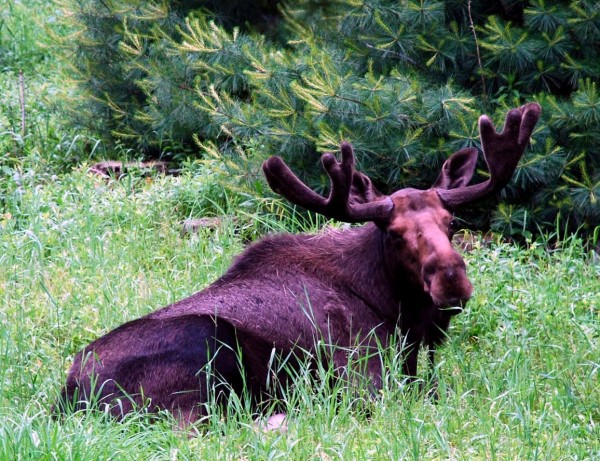
FARMINGTON – Moose and Winter Ticks will be the topic at the Western Maine Audubon Monthly Program to be held 7 p.m. on Wednesday, Nov. 12 at Room 101, Roberts Learning Center on the University of Maine at Farmington campus.
Moose are big and ticks are small, but when encumbered with thousands of them, an adult moose can be bled to death by winter ticks over a season. In the mid-West some moose herds have been cut in half by this affliction and are in jeopardy. While the problem is far less severe here, winter tick infestations are seriously hurting moose populations in New England as well.
Lee Kantar is the Moose Project leader for the Maine Department of Inland Fisheries and Wildlife. He has worked for the department for nine years, starting out as the Deer Project leader until 2013. Prior to working for MDIFW, Kantar was a district wildlife biologist for Washington Department of Fish and Wildlife, he also worked as a wildlife area manager and wildlife biologist on the Mt-Baker-Snoqualmie National Forest.
He received his master’s degree in Wildlife Science from New Mexico State University where he worked on an interstate elk herd. He received his bachelor’s degree from the University of New Hampshire.
Kantar will discuss current research on adult female and calf mortality in Maine moose, the role of the winter tick, and provide an overview of moose management in Maine including aerial surveys, moose harvest, and reproduction.
This program is free and open to the public.





Wonder if it would be possible to use bait stations as they have for deer herds threatened by the tick. This is what the future may be headed
Check out the links
http://wildlifecontrol.info/TickStudy/Pages/default.aspx http://www.aldf.com/fourPoster2.shtml
I truly believe the tick problem started when turkeys were introduced. We can easily blame a changing climate and we all know where that argument goes. I don’t ever remember when growing up, ever worrying about ticks until a short time after the turkeys arrived. Now turkeys are starting move north and with them ticks. If there is a study to be done, the movement of turkey population followed by tick infestations should be part of it.
Turkey’s, as well as chickens and guinea hens have great eyesight and have done wonders to decrease the tick populations where they are present.
The first turkeys re-introduced in Maine came from Connecticut. Lyme carrying ticks are in Connecticut. Connect the dots. Moose are dying by the hundreds. The success rates are going to be at an all time low this year. The state should really curb the amount of permits handed out or we are going to deplete the herd. The biologists have not done a good job on this,they are way behind and I’m afraid it may be too late. The tick problem is all the way northwest of Ft. Kent, so snow and cold does not prevent ticks. I spoke with a lot of locals up there and the picture they paint is not a pretty one!
Ray H
Outdoors, I never knew Turkeys ate tics, that’s interesting ,,like I said I think turkeys have something to do with the increased tick population.
Winter ticks (dermacenter albipictus) are a one-host species that only feed on members of the deer family, with moose as their preferred choice. They are not the same as lyme-carrying deer ticks (ixodes scapularis). Turkey have nothing to do with winter ticks – they do not carry them, are not a host to them, and do not spread them.